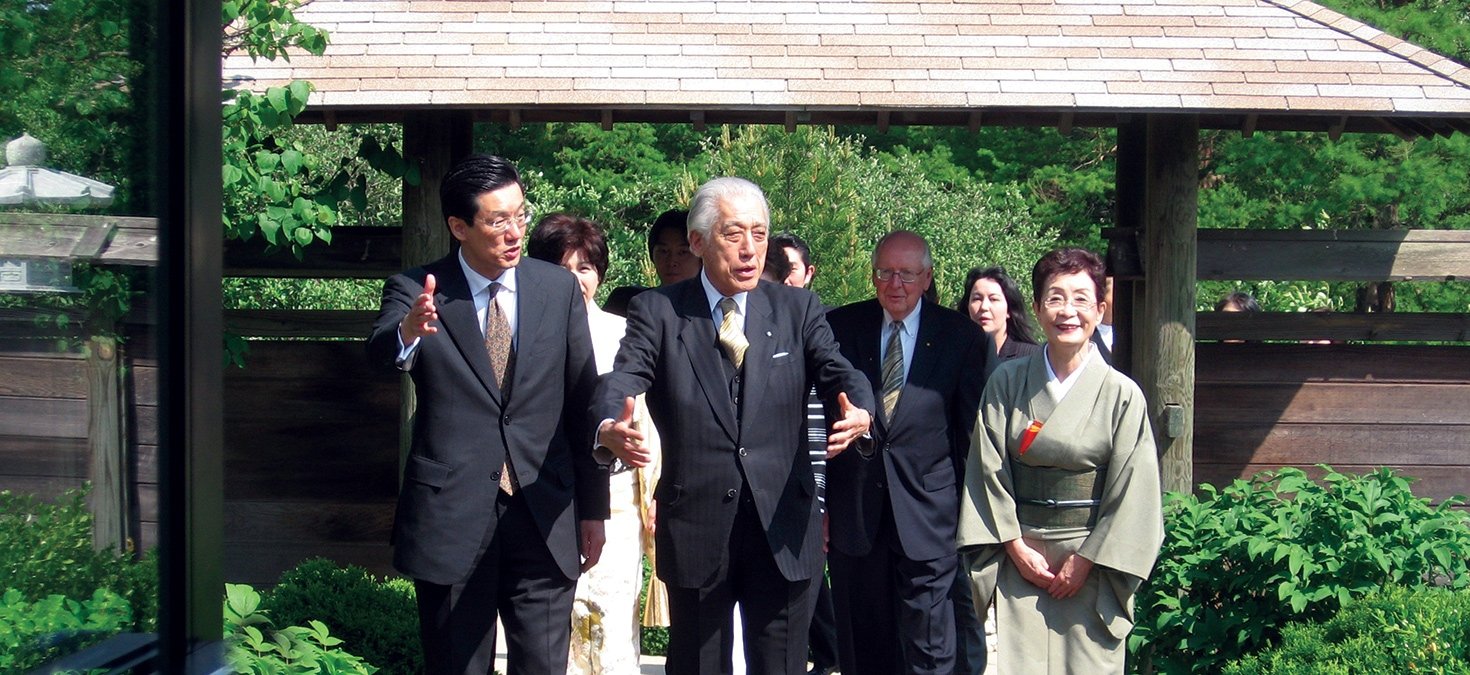Urasenke Tea Ceremony

The very heart of Japan House is the study of the traditional Japanese tea ceremony. The tea ceremony has ancient roots in the culture of Japan. Urasenke is one of the main tea schools in Japan and Japan House is honored to be affiliated with the Urasenke Way of Tea.
The idea of a tea ceremony can sound mysterious, but at its most basic, a tea ceremony is merely a host preparing and sharing a bowl of tea with a guest. The ceremony has been ritualized over the centuries into an art form however, and is a practice that takes years and years to master. It is a fascinating peak into Japanese culture as well because it incorporates so many other Japanese art forms and aesthetics. For instance a tea ceremony can include shodo (calligraphy), or chabana (tea flower arrangements), or kaiseki (a formal tea dinner). So with this one art form, you can begin to find endless other lessons about Japanese culture.
“When you hear the splash of the water drops that fall into the stone bowl you will feel that all the dust of your mind is washed away.”
The roots of the tea ceremony go back many, many centuries. Tea was being drunk for pleasure as early as the Tang Dynasty (618-907) but the most well known and revered figure in the history of the tea ceremony is Sen Rikyu (1522-1591) who put forth the four precepts of the Way of Tea: wa, kei, sei, jaku, or harmony, respect, purity, and tranquility. He also further promoted his master Takeno Jōō's belief in the of ichi-go ichi-e, a philosophy that each meeting should be treasured, it can only happen once in a lifetime.
Sen Rikyu's grandson split the family estate between his three sons, thus launching the three branches of tea schools, the Omotesenke, Urasenke, and Mushakojisenke traditions of Tea. Over the centuries the Urasenke Way of Tea flourished and with a more recent mission of expanding the practice of sharing a bowl of tea internationally, Urasenke has become the largest tradition of Chado in Japan and throughout the world.